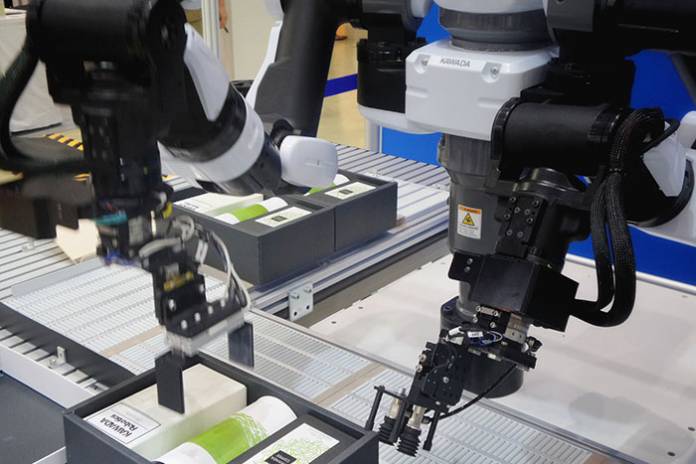
Since they were introduced into the work field, robots have been a mainstay in the manufacturing sector.
As technology has changed, there has been a lot of changes on how work is done. Also, new ideas about work have come about and the value of work and the work that people do has changed.
Consequently, robots have moved from the manufacturing factory onto other sectors such as retail. In retail, retail workers have welcomed robots with aplomb and have adopted them in their daily work lives for better results.
Here are some of the tasks that can be assigned to robots in the retail sector.
Warehousing and logistics
This is one area in which robots have helped greatly improve the retail sector.
With the rise of online shopping, it is important that customers are able to collect their shopping as soon as they get to the collection center or it gets delivered to them on time. When retail businesses get this right, they will get success.
A robot in the warehouse is able to quickly locate and move different products quickly across the large retail warehouses and have them shipped to the customers as fast as possible.
Customer service
In the retail sector, customer service is key. How different retailers handle their customers makes a large difference in their customer loyalty. This reflects in their revenues and profitability levels.
Some retailers have experimented with robots in their customer service and have seen great benefits. With advanced AI technology, these robots can carry out shopping for the customers at great ease.
Earlier robot entries into the retail industry started with robot checkouts for self-service in the retail store. If current retail experiments are successful, future retail stores will have little to no human workers with robots and technology taking over customer service operations.
Inventory management
Studies in the retail sector have shown that retailers suffer losses due to poor inventory management. Robots can be of great help when it comes to having the correct levels and the appropriate inventory in the store.
With vision capabilities, robots can move around the store identifying items that are running low and that is out of stock. They can then send the information to a central server that is monitored. This ensures that the store always has optimum stock every day, every time.
Floor management
Robots are also very essential in floor management at every store. Robots can be assigned tasks to ensure that there are no spills and if they happen, they are dried immediately before any accidents occur.
The robots can also be used to ensure that fast-moving goods are within reach for the customer. They can therefore take over tasks such as arranging stock on the shelves when they are ready for sale.
Product delivery
Delivery is an important aspect in the modern retail world. It is the most significant aspect of online shopping.
With advances in technology, retail stores have invested in numerous delivery systems and vehicles and staff. Autonomous vehicles and courier robots are some of the ways robots are being used in ensuring quick and safe delivery of products to customers from retailers.
Item retrievals
Robots in the retail store can be used to help disabled and elder customers who come to the store.
With their easy to use touch screen interfaces, visitors to the store can enter their shopping items on the touch screen and the robots will get the products for them.
Conclusion
At Universal Robots, retail stores can get their small collaborative robots with the capacity to move about, vision capabilities and an easy to use interface. As time goes and more retail stores adopt robots, retail stores will transform and deliver exemplary results to their stakeholders and customers.
With technological advancements, and as robots become much easier to acquire and use, the impact of robots in the retail sector will be greatly felt.










